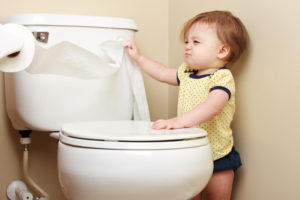Terrible Twos
 The terrible twos are a stage during early childhood associated with increased boundary-testing and tantrums.
The terrible twos are a stage during early childhood associated with increased boundary-testing and tantrums.
What Are the Terrible Twos?
Usually occurring sometime between 18 months and three years old, the terrible twos are associated with increased assertiveness, desire for independence, and frustration. Many developmental psychologists suspect that the terrible twos are a result of a child’s increasing ability to have separate desires from his or her parents in conjunction with insufficient ability to verbally express those desires. However, even highly verbal children may experience the terrible twos, so the developmental period might simply be a result of independence-seeking. Common traits associated with this developmental stage include regular tantrums, frequently saying no, refusal to follow caregiver instructions, defiance, and becoming easily frustrated.
The Terrible Twos and Child Development
The terrible twos are a normal stage of development among many American children and do not warrant mental health treatment. This phase typically goes away on its own. However, parents who set appropriate limits and who maintain consistent rules may be able to better manage children’s behavior during this period. Some strategies that some parents find effective for managing the terrible twos include:
- Rewarding children when they appropriately express their needs
- Ignoring tantrums and avoiding giving into tantrums
- Utilizing time-outs to help children calm down
- Giving children incentives such as toys or special outings when they do not have tantrums
- Talking calmly to children who are having tantrums
Terrible Twos and Culture
The terrible twos may be as much a culture phenomenon as a developmental one. In some other cultures, children do not go through this phase. Developmental psychologists have proposed several possible explanations for this. It may be that in other cultures children’s needs are more readily indulged and toddlers are expected to be relatively unreasonable. One study found that toddlers in the U.S. are expected to follow rules at much earlier ages than children in some other cultures.
References:
- Are the terrible twos a cultural phenomenon? (n.d.). Kansas Association for Infant and Early Childhood Mental Health. Retrieved from http://www.kaimh.org/index.php?option=com_content
- Smart ways of tackling the terrible twos. (n.d.). Child Development Institute Parenting Today. Retrieved from http://childdevelopmentinfo.com/parenting/terrible-twos.shtml
Last Updated: 06-20-2018